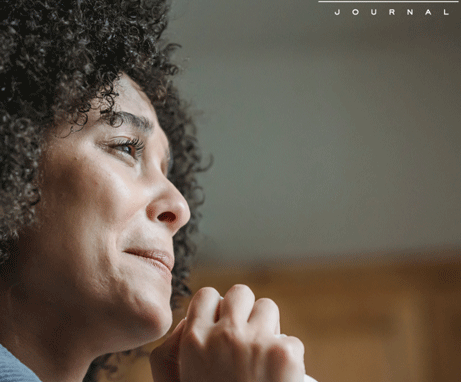 Myths about grief and loss are pervasive in our culture and often make the journey with grief more challenging and confusing. It may also be a reason that some grievers stay stuck in loss. These are the six myths identified over time by the Grief Recovery Institute identified in their work with grievers.
Myths about grief and loss are pervasive in our culture and often make the journey with grief more challenging and confusing. It may also be a reason that some grievers stay stuck in loss. These are the six myths identified over time by the Grief Recovery Institute identified in their work with grievers.
- Don’t feel bad
- Replace the loss
- Grieve Alone
- Grief just takes time
- Be strong and be strong for others
- Keep busy
As human beings, we are equipped with the capacity to feel and express all emotions—happy and sad, and everything in between. But if our earliest learning tells us not to feel bad, and if that teaching comes from parents, teachers, and other adult authority figures, then we have almost no choice than to believe our elders and try to repress or bury our naturally occurring sad or painful feelings. In order to perceive and feel happiness in life we must also be able to perceive and feel our sadness.
We must accept and honor both ends of that spectrum and not rob each other of our normal and natural reactions to the feeling we experience when either happy or sad things happen to them or to the people they love.
The myth don’t feel bad suggests that feeling bad or sad is not an appropriate reaction to a loss. By the time a child in our society has reached the age of 15, she or he has received more than 23,000 inputs suggesting that not only should they not feel bad in reaction to a grief event, but that they shouldn’t share those feelings with others.
Here is an example of how, as children, we might have learned to “not feel bad.”
A little child has come home from preschool with their feelings hurt by events with the other children on the playground. Mom, Dad, Grandma, or any other caretaker says “What happened?” The child responds, tearfully, that one of the kids was mean to her. The caretaker says, “Don’t cry, here, have a cookie, you’ll feel better,” thus setting the child up with a lifetime belief, from an important authority source, that feelings can be fixed with food.
Upon eating the cookie, the child feels different, not better, and for the moment is distracted and forgets about the incident on the playground. However, there has been no completion of the emotional pain caused by the event. The event and the feelings attached to it are now buried under the cookie, the sugar, and the distraction. If the child were to bring it up some time later, the child would probably be told, “We don’t cry over spilled milk,” as if to say that it is not okay to bring it up again. So it must stay buried. – Grief Recovery Method Handbook
The first and second myths – don’t feel bad and replace the loss. – often go hand in hand. For many children the first time they hear these phrases in some way is after a pet dies. A very common response is “don’t feel bad, on Saturday we will get you a new cat.” This promise to get a new pet infers “don’t feel bad” with the intent to diminish the pain and sadness caused by the death of their beloved pet. Rather than comfort the child in their grief, using the myths don’t feel bad and replace the loss confuses the child, making them feel that being sad or feeling bad Is not acceptable or appropriate.
Worse, they are led to believe that if they can just forget about the pet who died and throw themselves into a new relationship with a replacement pet, everything will be okay. But relationships are not replaceable like light bulbs. They cannot be replaced with the flick of a switch. Most of us don’t have emotional relationships with light bulbs or other inanimate objects, but we sure do have emotional connections to people and pets.
The problem then gets confirmed and compounded along the way towards adulthood. Are you familiar with things you might have heard in the breakup of a romantic relationship? “She wasn’t good enough for you” or “there are plenty of fish in the sea” which seems to infer both don’t feel bad and suggest replace the loss. I remember when I had a miscarriage one of the most painful things I heard from another was “you can try again.” While there is some intellectual truth to this comment is completely dismissed the pain I was feeling.
A much healthier way to help children, friends, and family is to provide the freedom to feel and express feelings of sadness. As adults we may have a harder time being with these kinds of feelings if we have learned over and over to avoid those feelings through the consistent use of the myths don’t feel bad and replace the loss.
A host of problems in life are connected to the inability to access and appropriately communicate our feelings in the moment we have them. Can you think of some examples from your life in which you may have learned to replace the loss rather than process feelings of grief?
All relationships are unique, there are no exceptions. You cannot replace a relationship. You must grieve and complete your relationships to the person [or animal] who died; or to the marriage or romance that ended, or to the business venture that has ended. Until and unless you do that, you’re doomed to drag the past into your present and thereby sabotage your future.
Spend time watching your comments and thoughts as you listen to those around you who may be grieving. Notice how prevalent and subtle these first 2 myths – don’t feel bad and replace the loss are in our culture. People often share with me that they just don’t know what to say or do in the face of someone sharing loss with them. Silence is a lost art – listen with your heart and remember that grievers do not need to fixed, they need to be heard! When you listen with your heart the next “right” thing to say (or not say) may be easier.
In the next blog we will discover how the other 4 myths of the 6 myths mentioned here come into play in our lives and how to support each other in healthy expressions of grief.
This article was first posted at the NWI Journal.

